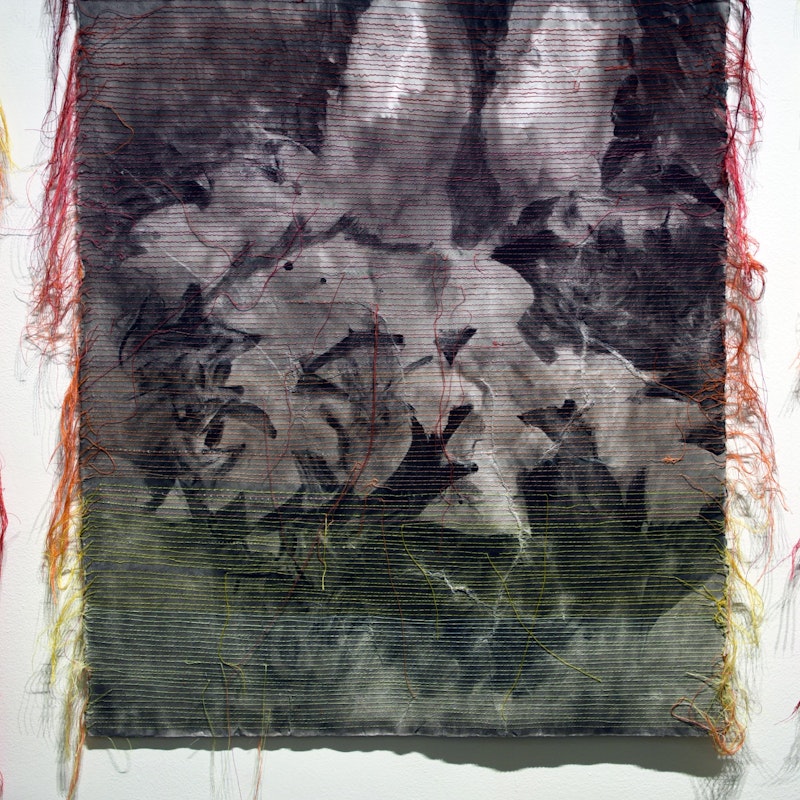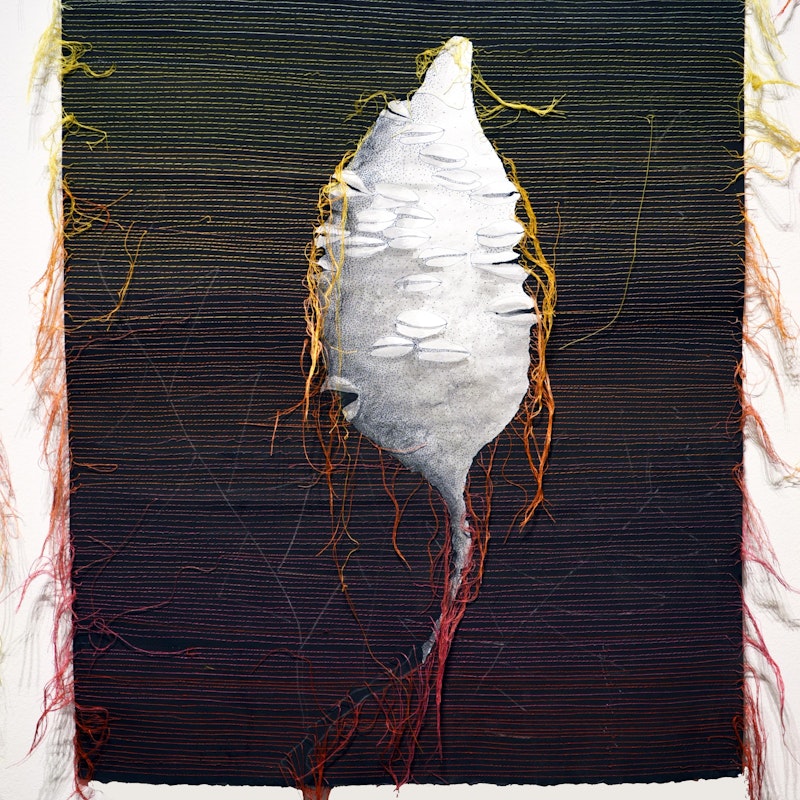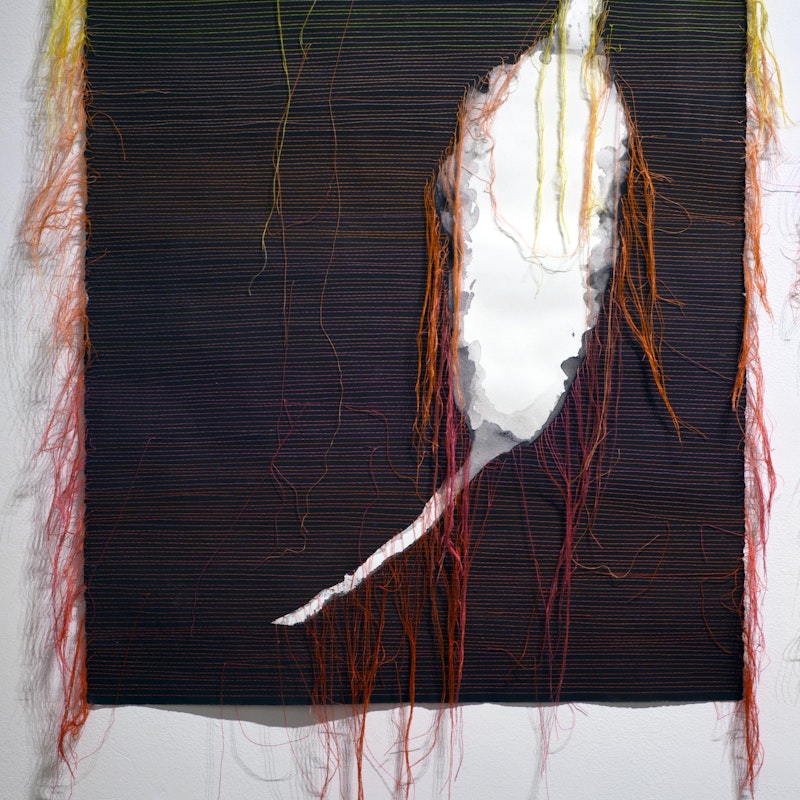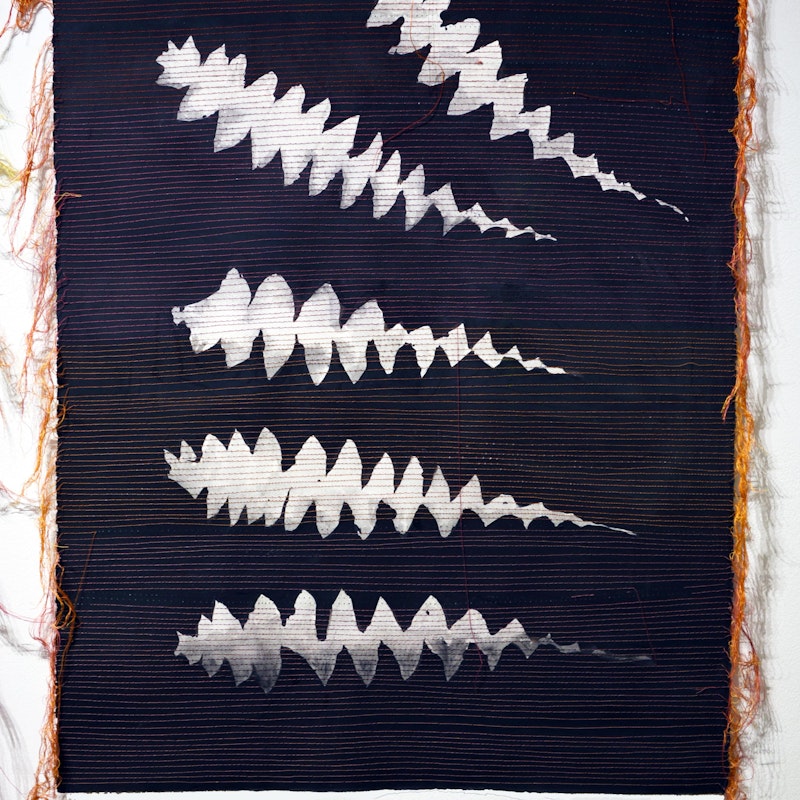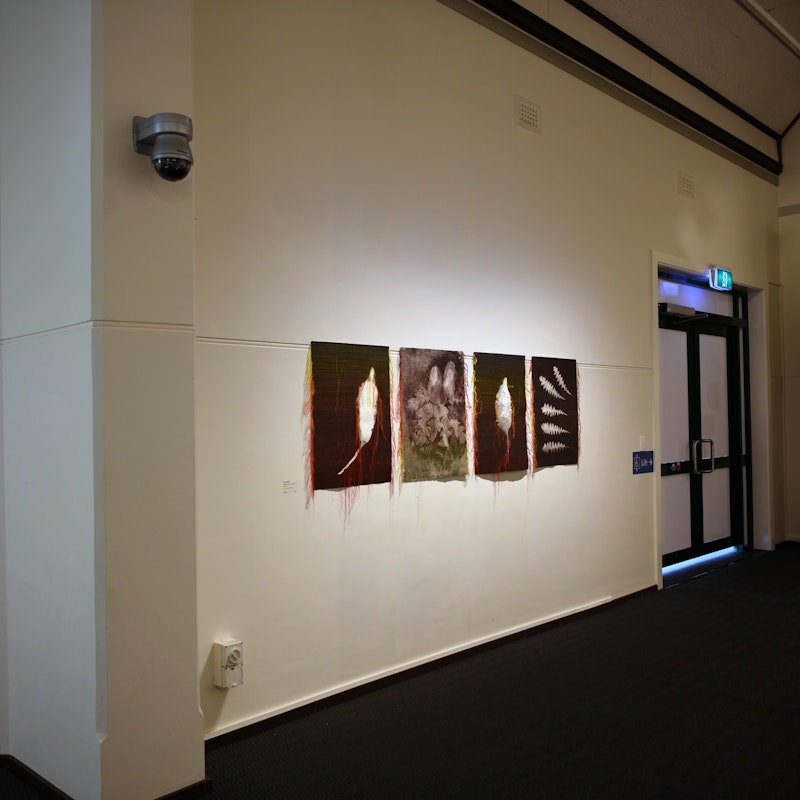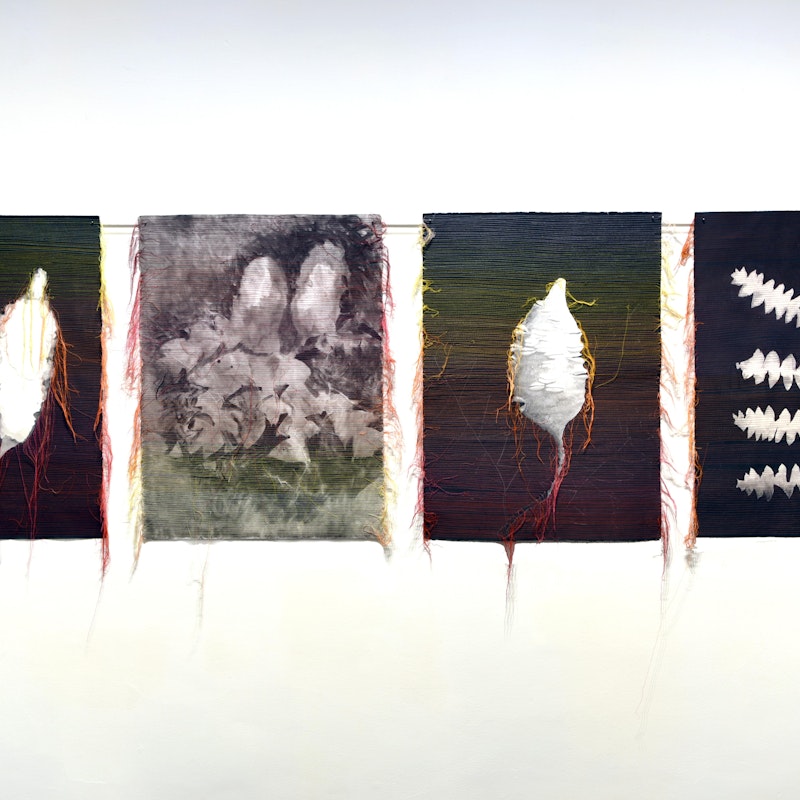2020 | South Western Times Survey
200ml or extinction 2020
Ink, Gesso, sewing thread on paper.
Overall size: 250cm x 150cm
All but one (living species) of Banksia are endemic to Australia. The South West is the centre of biodiversity with over 90% of species occurring only here. Banksias are ancient trees (fossilised pollen 65 and 59 million years old), they are food trees for a variety of nectivorous animals, birds and insects and they rely on rainfall (no species tolerates annual rainfall of less than 200 ml). Infrequent bushfires are beneficial but too frequent and hot bushfires reduce and eliminate populations.
So where does this leave the Banksia with respect to climate change, lack of rainfall and now frequent fire storms.
This work uses the exposure of the Banksia to climate change as a symbol of the vulnerability of all.

